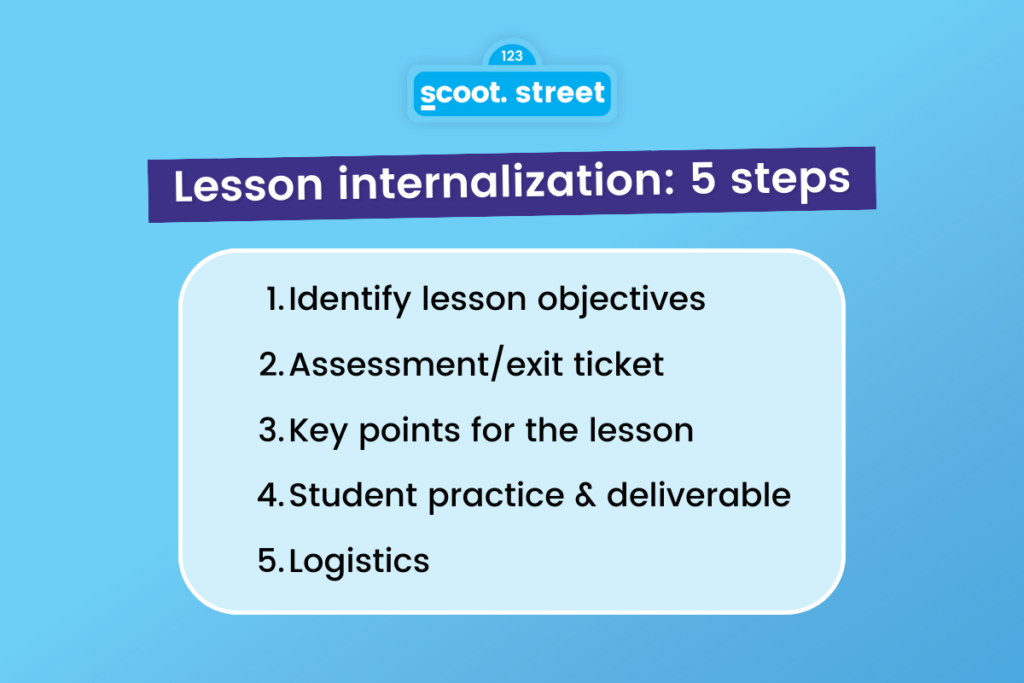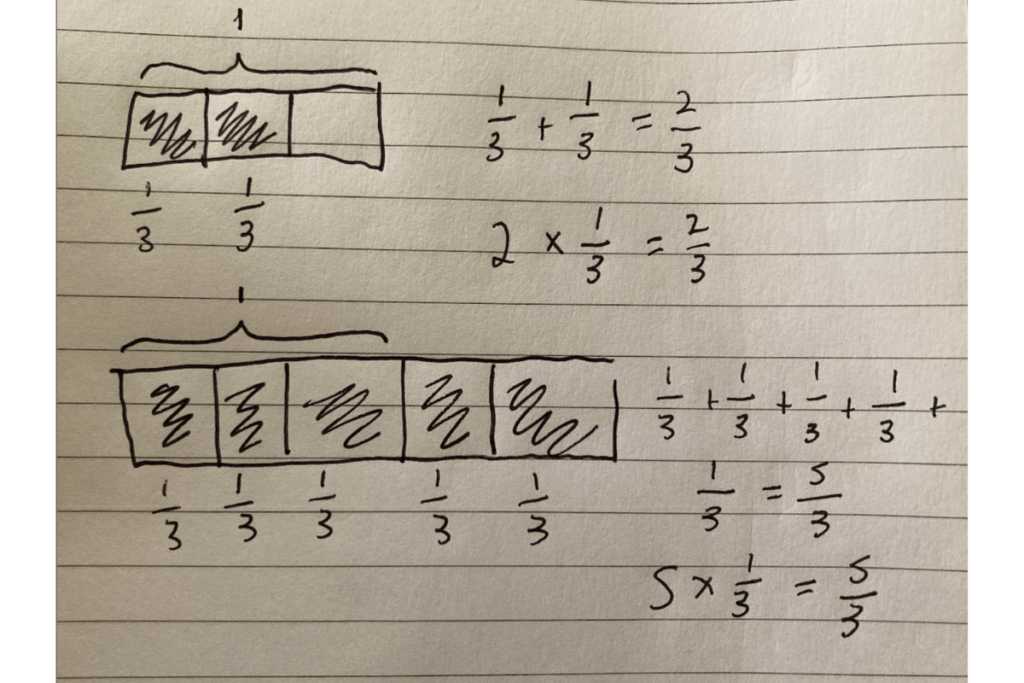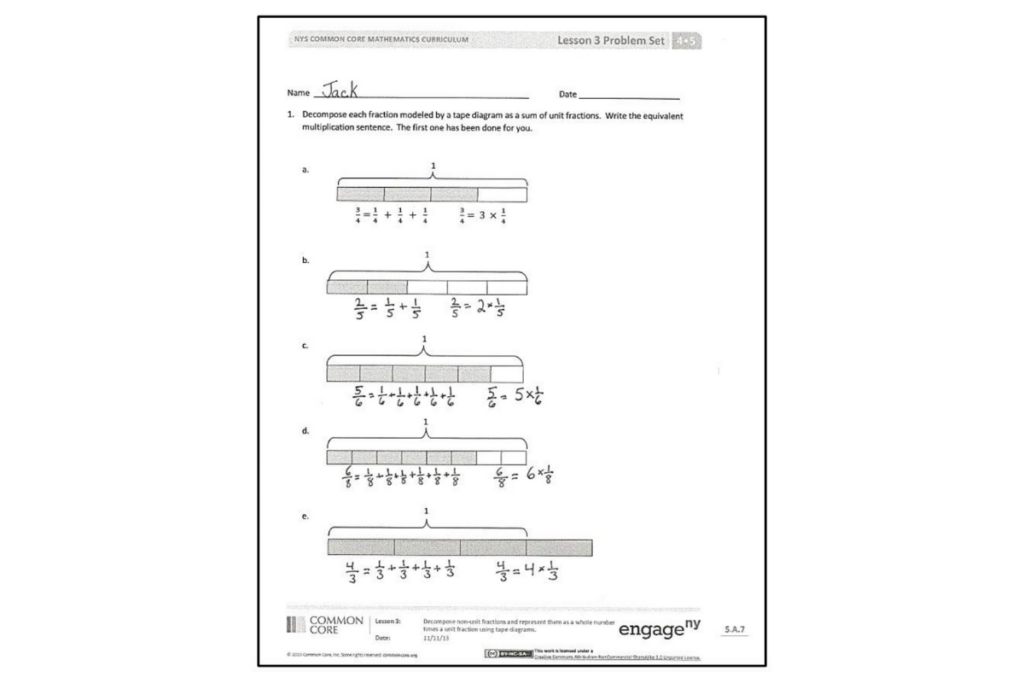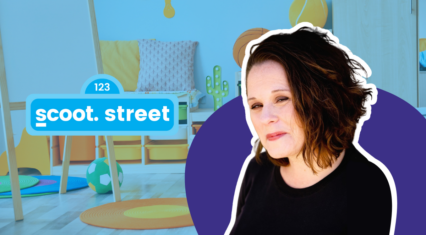Search
Get started
Log into your referral dashboard
You’ve got a lesson plan to follow, but you only have 10 minutes to get familiar with it. What do you do?
With so little time to prepare, it’s important to have a plan of attack to digest the lesson plan quickly and thoroughly in order to teach effectively for the day.
Our blog introduces 5 steps to internalize a lesson plan to prepare for student learning and engagement. Substitutes, take note—these tools will prove invaluable!
Interested in subbing with us?
Looking for more training resources as a sub? Apply to Scoot Education! We’re an educational staffing company dedicated to creating exceptional experiences in education.
We’ll assist you in finding the perfect classroom fit and support your growth as an educator.
What is lesson internalization and why is it important?
View this post on Instagram
“Lesson internalization is the process by which teachers study the lesson to understand what students are expected to learn in the lesson and make decisions about how to deliver the lesson content.” – Instruction Partners
The benefits of lesson internalization are:
- Educators feel confident and prepared to teach the lesson effectively
- Students learn the lesson successfully
Imagine that your lesson plan tells you to teach students how to model 8÷4 with a tape diagram. What on earth is that?
While you may encounter unfamiliar terms or concepts, taking 10-20 minutes for lesson internalization will help you teach with the right goals, methods, and supports in mind.
A disclaimer for educators
Lesson internalization isn’t about crafting lesson plans from scratch, but rather preparing to teach existing ones effectively.
Our article is geared toward equipping substitute teachers to teach within their constraints, but we believe our 5-step plan benefits all educators, whether you are a full-time teacher, guest educator, or a teacher-in-training.
The 5 steps of lesson internalization

Let’s illustrate these steps using the example we mentioned earlier.
Imagine you’re a sub preparing to teach a 4th grade math class their first topic in the fraction unit. You’re left these lesson plans. While you may not have the scope of learning for the entire grade or even the unit, you can still teach the lesson well!
1. Identify lesson objectives
What are students expected to know and be able to do at the end of class?
A learning objective is a measurable statement of what a student should know or be able to do at the end of a lesson. Understanding this will help you understand how the lesson is designed to help students achieve the learning objective.
For example, the objective is: “Decompose non-unit fractions and represent them as a whole number times a unit fraction using tape diagrams.”
As an educator, you may or may not be familiar with some of this math language. That’s ok! It’s good to begin with questions. Then, find answers as you continue with the 5 steps.
2. Define the assessment/exit ticket
What is the measure of their learning for today?
Next, take a look at the assessment or the exit ticket. This is an example problem or test that shows how you will measure student learning.
In this case, students must show they know how to solve the fraction decomposition problem shown below:

Try completing the problems yourself using the methods being taught. Putting yourself in your students’ shoes will prepare you to teach difficult parts of the lesson.
3. Understand key points for the lesson
What are the bite-sized pieces of knowledge that a student must learn today?
Dig more deeply into the lesson plan. Identify key parts of the lesson the student needs to understand.
For example, if students will practice expressing ¾ in these three ways:
- Tape diagram: the bar with shaded parts
- Addition of unit fractions: ¾ = ¼ + ¼ + ¼
- Multiplication of a whole number times a unit fraction: ¾ = 3 x ¼
You must know how to draw out a tape diagram, explain what a unit fraction is, and how multiplication of fractions works.
If you don’t know what a unit fraction is or how to use a tape diagram correctly, now is the time to look up definitions and practice more examples to fill in any knowledge gaps.
In general, it’s good practice to highlight unfamiliar key definitions or concepts. Then find the answers and rehearse how to solve the problem.
4. Determine student practice and deliverable
How will students practice? (worksheet, pages in textbook, etc.) Is this independent work or group work?
In step 4, identify the class work and whether it can be done with the whole class, in groups, or individually.
In our example, students will complete the below problem set in their workbooks. Any option can be effective: students can work individually, pair up to allow them to help each other, or go through problems together and ask students to solve them on personal whiteboards.

5. Iron out logistics
What materials will you need?
Lastly, save time by having lesson materials as ready as possible. Know where everything is in the classroom, print out anything you need, or get anything else you need from the supply room.
You might need:
- Scratch paper
- Student whiteboards: If you don’t know the routine for distribution or where the markers are, ask the students or hand out scratch paper instead.
- Copies of exit ticket/worksheet: Print out copies of the exit ticket, so you can collect it at the end of class for the teacher to assess student’s understanding easily when they return.
- Extra sharpened pencils
- Sub note: Use this sub report template to leave a summary of how the lesson went for your teacher!
Commonly asked questions
How long should it take to internalize a lesson?
As a sub, the amount of time you will have to complete this process is highly variable–anywhere from 10 to 30 minutes. Use any small amount of time you have to get prepared.
You’ll also need less time the more you’re experienced with a topic or familiar with the classroom’s routines and stations.
One thing’s for sure, the more you practice lesson internalization, the faster you’ll get at it.
What if there are no lesson plans?
Find a teacher near you that teaches the same grade-level and subject. They should be able to provide you with some materials or guidance on what you can do instead.
Alternatively, have some backup plans in your substitute teacher to-go bag to keep students engaged and learning.
What if students finish early?
If students finish early, plan to have an activity that will keep them engaged and learning. Some ideas are open-ended activities like reading, writing prompts, or math/pictogram puzzles. It helps to have these activities ready-to-go in your sub bag.
A subbing best practice: know your lesson plan
Across different grade levels, subjects, and curricula, internalizing lesson plans prepares substitute teachers to teach and engage students effectively.
What are some methods you’ve used to prepare to teach in the morning? Leave your tips down below!
Want to sub with us?
If you’re a current sub or someone looking to try out teaching, apply to Scoot Education. We’re an educational staffing company dedicated to creating exceptional experiences in education.
Subbing with Scoot means access to more opportunities, more school districts, and more excitement!



![How to write a strong substitute note [+free template!]](https://scoot.education/wp-content/uploads/2022/05/thank-you-426x235.png)


